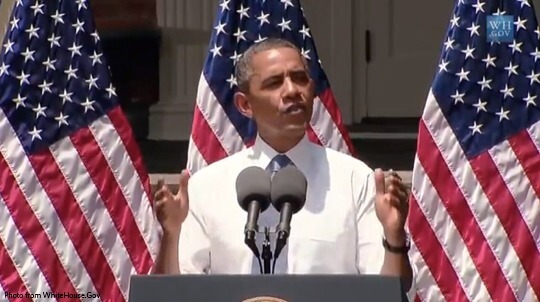This post originally appeared on The Huffington Post.
In his climate speech this week, President Obama gave the go ahead for the U.S. Environmental Protection Agency (EPA) to develop national greenhouse gas standards for both new and existing power plants — making carbon regulation under the Clean Air Act the primary action of his broader plan to reduce U.S. carbon emissions.

There are costs and inefficiencies to using Clean Air Act regulatory standards rather than national legislation to reduce emissions (see Resources for the Future’s recent work for a comparative discussion), but there are good opportunities here, too. The Clean Air Act relies on states for implementation and may offer the potential to use flexible options for state implementation. If so, a Clean Air Act approach can serve as an important opportunity for the country: to take advantage of state experimentation and know-how.
As we have said before, the U.S. states are living up to their label as “laboratories of democracy,” experimenting with a range of climate and clean energy policies. The president said it himself:
“Nearly a dozen states have already implemented or are implementing their own market-based programs to reduce carbon pollution. More than 25 have set energy efficiency targets. More than 35 have set renewable energy targets.”
These states are (or should be) learning what works and what does not work in their economies, political structures, cultures, and geographies. What polices are effectively increasing low-cost renewable energy and reducing greenhouse gases? How could they modify those policies to save more money for taxpayers while achieving the same or better results? These lessons can help drive development of an effective national regulatory framework under the Clean Air Act.
Assuming that EPA harnesses some flexibility in the Clean Air Act, it is critical that state-driven lessons inform how EPA shapes national greenhouse gas standards that enable states to successfully reduce emissions in the most cost-effective and enforceable manner. And the states need ground-tested approaches that work for their circumstances, whether they are upgrading current policies or building a framework from scratch to implement federal Clean Air Act requirements.
My organization, Climate Policy Initiative, is looking to its own U.S. backyard — California — to provide effectiveness lessons relevant and useful to other states. We are starting to examine how industry is responding to California’s AB32 portfolio of climate and energy policies, especially the cap and trade program that launched this year. With an eye to drawing lessons most applicable to other states, we aim to identify barriers to the most efficient and least costly participation of businesses under similar policies. For example, in previous work, we’ve seen that some state approaches to achieving their renewable energy targets while limiting costs to ratepayers have worked better than others.
If states have sufficient flexibility in how they meet national greenhouse gas standards and if states do look to their own experience and other states’ lessons, then the country can minimize some of the inefficiencies that come with using Clean Air Act regulation to reduce greenhouse gas emissions. This could spur new efficiencies by taking advantage of states’ knowledge of what works best for themselves. And if, one day, national comprehensive climate legislation does come to pass, a solid library of state-driven experience across the country will provide Congress, states, and stakeholders the opportunity to use our state laboratory to build the most cost-effective, adaptable, and efficient national system.

